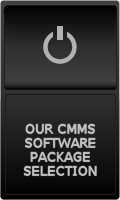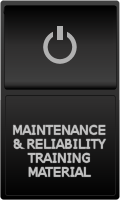INSTANT ENQUIRY FORM
Submit the form or
CMMS ROI
![]()

ROI or Return on Investment Calculations for CMMS, CAFM and Maintenance Management Systems
A CMMS Return on Investment (ROI) calculation results in
a value that represents the benefits received from a project against the
total costs of the project.
That's basically all there is to it, but if you ask ten different accountants how to calculate CMMS ROI the chances are that you would get ten different answers. A certain amount of "poetic license" can also be evident, depending on whether the person crunching the numbers is "for" or "against". This does not mean that it is impossible to arrive at a reasonable and sensible ROI figure.
ROI Calculation Method for a CMMS
If you search around for information on ROI calculation you will find many examples of "Calculating ROI for IT projects/engineering projects/training/asset acquisition, etc." You will be seeking to justify a CMMS but what must not be forgotten is that the principles for building a business case for any project are broadly similar. The standard ROI (or CMMS ROI) calculation can be simply expressed as follows:
![]()
If you need to calculate the annual percentage savings over a period of years the original calculation can be developed further. Let's say,
![]()
![]()
![]()
In this example the sum of the benefits and costs for each year are divided by the number of years used in the calculation, (three).
OK - we now have our formulae, but the overriding problem is that some of the benefits of a CMMS may be intangible. Calculating the costs should be relatively easy, the clever part is in being able to determine or forecast what the tangible benefits will be. Many maintenance departments would not be able to provide an accurate figure for their total annual maintenance budget. If this total is not available you will have to use what figures you do have.
For example most departments have a good idea of what they are spending specifically on overtime. The introduction of a CMMS usually leads to better planning of work and the subsequent reduction of planned versus unplanned jobs should lead to a reduction in overtime levels. You can then look at the projected ROI on your overtime component alone.
Example of a CMMS ROI Calculation
A small maintenance department spends £40K per annum on overtime. With a goal of halving this, it is estimated that the CMMS implementation can reduce it to £31K in the first year, £23K in the second year and £20K in the third year. Implementation and software costs are 18K for the first year, 8K for the second year and 4K for the third year.
![]()
![]()
Assuming that the estimated overtime savings are met this means that you can demonstrate a 53.33% ROI per annum for the first three years on overtime savings alone. Savings on other costs such as headcount, inventory and production downtime can be calculated in a similar way. Ultimately, using this model, the cost of a CMMS is fairly easy to justify.
Feel free to contact us if you require further information on ROI or if you want to comment on this method or any other method you may use. You may also download a printer friendly version of this ROI Calculation here
The Business Industrial Network have used this article to develop an online version of this CMMS ROI calculator here: CMMS ROI Calculator
(Disclaimer: Perspective CMMS have offered the above ROI calculation in good faith. We recognise that ROI calculation is not an exact science so you must decide for yourself if it is applicable to your CMMS selection process.)





